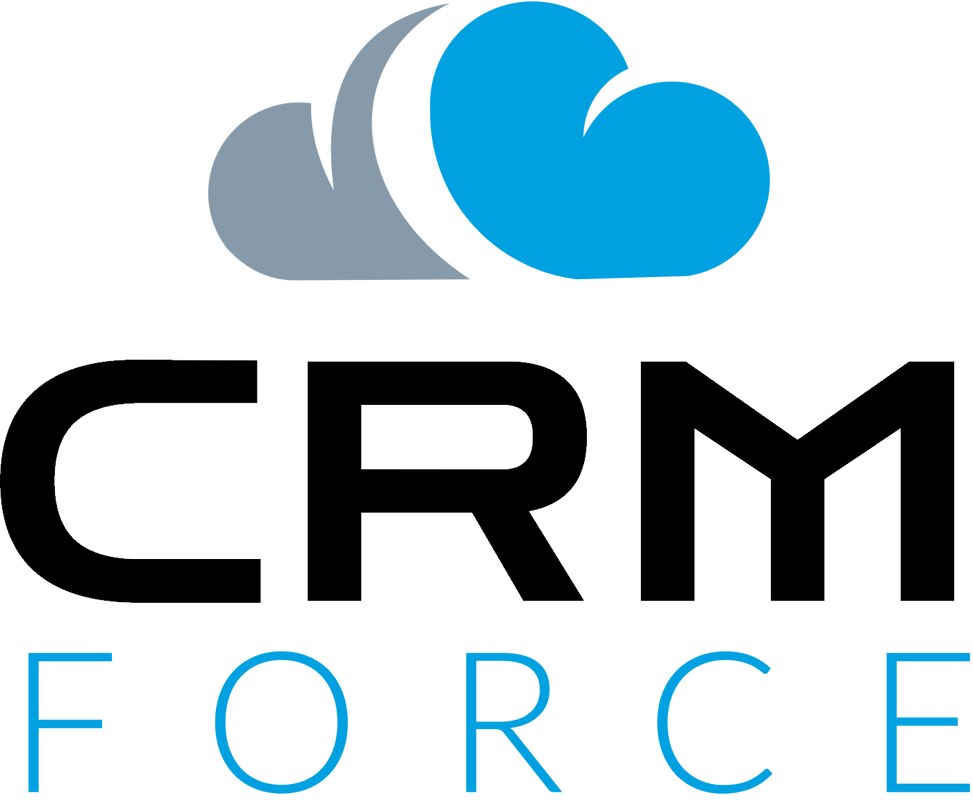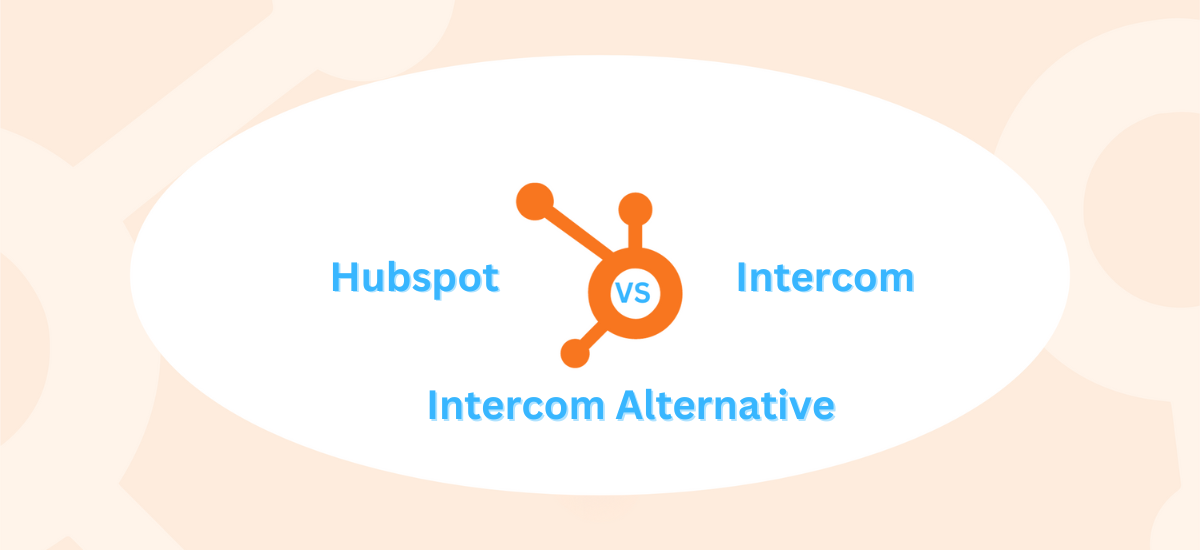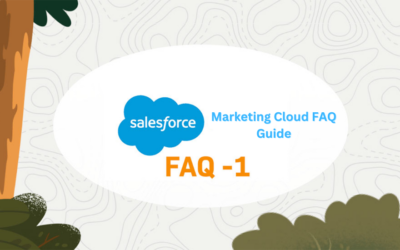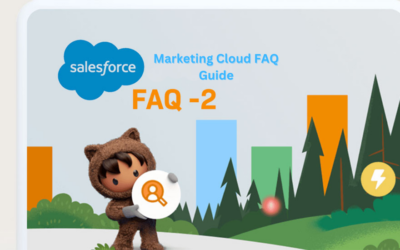In the ever-evolving landscape of digital marketing and customer engagement, the quest for robust platforms with advanced technical capabilities is paramount. Businesses are on the lookout for solutions that not only streamline their operations but also leverage cutting-edge technologies to propel them ahead in a competitive market. This comprehensive exploration delves into the technical intricacies of two industry stalwarts—HubSpot and Intercom. These platforms stand at the forefront, offering multifaceted tools enriched with advanced features spanning CRM, marketing automation, and customer communication. Our technical analysis will unravel the architectural brilliance behind HubSpot’s intuitive CRM, automation workflows, and sales hub functionalities. Simultaneously, we will dissect Intercom’s technical prowess in real-time messaging solutions, sophisticated automation powered by machine learning, and its impact on optimizing customer experiences. Understanding the technical foundations of these platforms is crucial for businesses seeking not just solutions, but technological partners that align seamlessly with their intricate digital ecosystems.
As we embark on this technical journey, we aim to provide businesses with a granular understanding of the technical underpinnings that differentiate HubSpot and Intercom. The intricate details of their CRM architectures, marketing automation engines, and communication protocols will be laid bare, empowering decision-makers with the technical insights needed to make informed choices. Beyond a mere feature-by-feature comparison, this exploration seeks to unravel the code, figuratively and literally, driving these platforms. In a world where every technical nuance can translate into a competitive advantage, businesses can afford to make decisions without a thorough understanding of the technical landscapes these platforms offer. Let us traverse the intricate tapestry of HubSpot and Intercom’s technical prowess, unlocking the potential that these platforms hold for businesses striving for excellence in customer engagement and digital marketing. If you need assistance with Salesforce CRM setup and optimization, companies like CRM Force can provide valuable expertise and support.
Section 1: Understanding HubSpot
HubSpot has emerged as a dominant force in the realm of customer relationship management (CRM), providing a comprehensive suite of tools designed to facilitate inbound marketing, sales, and customer service. To gain a nuanced understanding of HubSpot’s technical intricacies, we’ll delve into its key features and functionalities.
HubSpot CRM Capabilities: At the core of HubSpot’s offering is its robust CRM system. HubSpot’s CRM is a centralized hub that seamlessly integrates with marketing, sales, and service tools. It enables businesses to manage and track customer interactions, organize leads, and gain valuable insights into customer behavior. The CRM’s technical architecture ensures that customer data is stored securely and can be accessed efficiently by authorized team members.
HubSpot’s CRM utilizes advanced data analytics and machine learning algorithms to provide predictive lead scoring. This technical feature aids sales teams in prioritizing leads based on their likelihood to convert, optimizing the sales process. Additionally, the CRM allows for seamless data synchronization across various touchpoints, ensuring that customer information is always up-to-date.
Marketing Automation Tools: HubSpot’s marketing automation tools are designed to streamline and enhance marketing efforts. The platform offers a visual workflow editor that allows marketers to create intricate automation sequences without delving into complex code. This drag-and-drop functionality simplifies the technical aspects of designing automation workflows, making it accessible to users with varying technical proficiencies.
Furthermore, HubSpot’s marketing automation encompasses features such as email marketing, lead nurturing, and personalized content creation. The technical backbone of these features relies on robust algorithms that analyze user behavior and engagement metrics, facilitating the delivery of targeted and personalized content to the right audience at the right time.
Sales Hub Functionalities: HubSpot’s Sales Hub is engineered to empower sales teams with tools that enhance productivity and drive revenue. From lead generation to deal tracking, the Sales Hub provides a suite of technical capabilities that align with the sales process.
One notable technical feature is the Sales Hub’s integration with artificial intelligence (AI) for sales acceleration. This involves predictive analytics and machine learning algorithms that analyze historical sales data to identify patterns and optimize future sales strategies. The Sales Hub also integrates with communication tools, facilitating seamless communication and collaboration within sales teams.
Integration Capabilities: HubSpot’s technical architecture is designed with flexibility in mind, allowing seamless integration with a plethora of third-party applications. Through HubSpot’s App Marketplace and robust APIs, businesses can integrate their CRM with tools like customer support platforms, e-commerce solutions, and analytics tools.
This technical interoperability ensures that HubSpot can be tailored to meet the unique needs of each business. Whether it’s integrating with a preferred email marketing platform or syncing data with a project management tool, HubSpot’s technical architecture enables a high degree of customization and scalability.
Section 2: Unpacking Intercom
Intercom stands out as a prominent player in the customer communication space, offering a suite of tools tailored for live chat, email marketing, and customer support. To comprehend the technical intricacies that make Intercom a formidable platform, we’ll dissect its key features and delve into the underlying technologies driving its functionalities.
Messaging Solutions: At the core of Intercom’s technical architecture lies its messaging solutions, which encompass live chat, in-app messaging, and push notifications. Intercom’s live chat functionality employs WebSocket technology, enabling real-time, bidirectional communication between users and support agents. This technology ensures low-latency communication, crucial for providing instant assistance and improving the overall user experience.
Additionally, in-app messaging and push notifications are built on a robust delivery infrastructure. Intercom utilizes Content Delivery Networks (CDNs) to distribute messages efficiently, optimizing delivery speed regardless of the user’s geographical location. The technical backend ensures that messages are delivered reliably and promptly across various devices and platforms.
Automation Capabilities: Intercom’s automation capabilities leverage machine learning algorithms and rule-based triggers to automate routine tasks and personalized interactions. The technical foundation of Intercom’s automation engine involves natural language processing (NLP) algorithms, allowing the system to comprehend and respond to user inquiries in a contextually relevant manner.
Automation in Intercom extends beyond simple rule-triggered responses. Through advanced algorithms, the platform can analyze user behavior, predict preferences, and automate targeted communication. This technical sophistication enables businesses to deliver highly personalized interactions at scale, enhancing user engagement and satisfaction.
Email Marketing: Intercom’s email marketing functionalities are underpinned by a robust email delivery infrastructure. Leveraging technologies such as DomainKeys Identified Mail (DKIM) and Sender Policy Framework (SPF), Intercom ensures high email deliverability rates. These technical measures authenticate the sender’s identity and prevent email spoofing, crucial for maintaining a positive sender reputation.
Moreover, Intercom’s email marketing features include A/B testing, allowing businesses to experiment with different elements of their emails. The technical implementation of A/B testing involves randomized sampling, statistical analysis, and automated winner selection based on predefined metrics, ensuring that businesses can optimize their email campaigns effectively.
Impact on Customer Experience: Intercom’s technical prowess significantly impacts the overall customer experience. The platform’s ability to unify customer communication across channels, coupled with its advanced analytics capabilities, enables businesses to gain actionable insights into user behavior. The technical backend processes vast amounts of data in real-time, providing businesses with the intelligence needed to make informed decisions and continuously enhance the customer journey.
Section 3: Comparative Analysis
In this section, we will conduct a technical comparative analysis between HubSpot and Intercom, evaluating key factors such as ease of use, pricing structures, scalability, and integration capabilities. The goal is to provide businesses with a detailed understanding of the technical nuances that differentiate these platforms, aiding in the selection process based on their specific requirements.
Ease of Use:
HubSpot: HubSpot is lauded for its user-friendly interface, catering to users with varying technical expertise. The platform employs a responsive design and intuitive navigation, making it accessible to both marketing and sales teams. From a technical standpoint, HubSpot’s dashboard is optimized for performance, ensuring swift data retrieval and a seamless user experience.
Intercom: Similarly, Intercom prioritizes ease of use with a clean and intuitive interface. The technical design emphasizes responsiveness, ensuring that users can engage with customer communication tools efficiently. From a technical perspective, Intercom’s chat interface utilizes efficient WebSocket connections to facilitate real-time communication, contributing to an overall smooth user experience.
Pricing Structures:
HubSpot: HubSpot offers a tiered pricing structure based on the features and services required. The technical aspect of HubSpot’s pricing involves scalability, with businesses paying for the resources and capabilities they need. The platform’s pricing model accommodates various budgets and growth trajectories, making it a versatile choice for businesses at different stages.
Intercom: Intercom’s pricing is also tiered, reflecting the scope of features and usage. From a technical standpoint, Intercom’s pricing structure is designed to align with the value businesses derive from customer communication. This includes factors such as the number of users, monthly active users, and the scale of automation. The technical architecture supports flexible pricing to cater to businesses of all sizes.
Scalability:
HubSpot: HubSpot is recognized for its scalability, catering to the needs of startups and enterprise-level businesses alike. The technical infrastructure of HubSpot is designed to handle increased data volumes, user interactions, and automation processes as businesses grow. This scalability is crucial for ensuring a seamless transition as a business expands its operations.
Intercom: Intercom, too, is designed to scale with businesses. Its technical architecture supports the increasing demands of user interactions, message delivery, and automation at scale. Whether a business experiences a sudden surge in customer engagement or plans for gradual growth, Intercom’s infrastructure is built to accommodate such changes without compromising performance.
Integration Capabilities:
HubSpot: HubSpot boasts extensive integration capabilities, facilitated by a well-documented API and an App Marketplace. From a technical standpoint, HubSpot allows businesses to connect their CRM with a wide range of third-party applications seamlessly. The platform’s integration framework supports data synchronization, ensuring that information flows seamlessly between HubSpot and other tools in the tech stack.
Intercom: Intercom, too, places a strong emphasis on integration. Its technical architecture supports integrations with popular tools across various categories, including CRMs, analytics platforms, and e-commerce solutions. Intercom’s API enables businesses to synchronize customer data, automate workflows, and create a unified ecosystem that enhances overall operational efficiency.
Technical Verdict: The technical verdict between HubSpot and Intercom depends on the specific needs and priorities of a business. HubSpot excels in providing a user-friendly experience with a focus on marketing, sales, and CRM capabilities. Intercom, with its strength in real-time communication and advanced automation, is a preferred choice for businesses prioritizing customer engagement.
Ultimately, the technical decision between HubSpot and Intercom hinges on the unique requirements and technical preferences of each business. Both platforms exhibit technical excellence in their respective domains, making them formidable choices for businesses aiming to elevate their customer engagement strategies.
Section 4: Use Cases and Success Stories
In this section, we will delve into the technical aspects of real-world use cases and success stories that highlight how businesses have leveraged either HubSpot or Intercom to achieve significant results.
HubSpot Use Cases:
Technical Implementation of Marketing Automation: Several businesses have successfully implemented HubSpot’s marketing automation tools to streamline their marketing processes. The technical implementation involves creating automated workflows, setting up lead nurturing campaigns, and utilizing dynamic content to personalize user experiences. Through the technical integration of these features, businesses have reported increased efficiency in lead generation and conversion.
CRM Customization for Sales Optimization: HubSpot’s CRM customization capabilities have been pivotal for businesses aiming to optimize their sales processes. Technical teams can tailor the CRM to align with specific sales workflows, configure custom deal stages, and implement advanced analytics for sales performance tracking. This level of customization empowers sales teams with the technical tools they need to enhance their productivity and drive revenue.
Intercom Use Cases:
Real-Time Support with Intercom Chat: Businesses across industries have implemented Intercom’s chat functionality for real-time customer support. The technical implementation involves embedding chat widgets on websites or within applications, leveraging Intercom’s WebSocket technology for instant communication. The technical backbone ensures low-latency interactions, providing users with quick and efficient support.
Personalized Messaging through Intercom Automation: Intercom’s automation capabilities have been instrumental in delivering personalized messaging at scale. Technical teams can set up automation rules based on user behavior, enabling targeted communication. Leveraging machine learning algorithms, businesses can automate responses that are contextually relevant, enhancing user engagement. The technical sophistication of these automation features contributes to improved customer experiences.
Technical Insights from Success Stories: Analyzing these use cases provides technical insights into how businesses have strategically implemented HubSpot and Intercom features. From CRM customization to real-time support, the success stories underscore the importance of aligning technical capabilities with specific business objectives. Businesses seeking inspiration for their own technical implementations can draw valuable insights from these real-world scenarios.
Section 5: HubSpot vs. Intercom – The Verdict
This section aims to provide a technical verdict based on the comparative analysis conducted earlier. While both platforms excel in their respective domains, certain technical considerations may influence the decision-making process for businesses.
Technical Considerations for HubSpot:
Scalability of Automation Workflows: HubSpot’s technical architecture excels in supporting scalable automation workflows. The platform’s intuitive workflow editor simplifies the technical aspects of designing intricate automation sequences. For businesses with a focus on personalized marketing automation at scale, HubSpot’s technical capabilities offer a robust solution.
Customization of CRM for Advanced Analytics: HubSpot’s CRM customization features empower technical teams to tailor the CRM according to specific business needs. The ability to create custom fields, configure deal stages, and implement advanced analytics provides businesses with a technical edge in optimizing their sales processes. This level of customization enhances the technical capabilities of HubSpot for businesses with complex CRM requirements.
Technical Considerations for Intercom:
Real-Time Communication with WebSocket Technology: Intercom’s technical strength lies in its real-time communication capabilities, facilitated by WebSocket technology. Businesses that prioritize instant, bidirectional communication for customer support or engagement may find Intercom’s technical architecture advantageous. The low-latency nature of WebSocket connections contributes to a seamless user experience.
Advanced Automation with Machine Learning: Intercom’s automation capabilities leverage machine learning algorithms for advanced rule-based triggers. The technical sophistication of these algorithms enables businesses to automate personalized interactions based on user behavior. For companies seeking a technically advanced solution for targeted messaging and automation, Intercom’s capabilities stand out.
Tailoring the Decision to Technical Needs: In reaching a technical verdict between HubSpot and Intercom, businesses should consider their specific technical requirements, scalability needs, and the intricacies of their workflows. HubSpot may be the preferred choice for businesses focusing on scalable marketing automation and CRM customization. In contrast, Intercom’s strengths in real-time communication and advanced automation make it an ideal technical solution for businesses prioritizing customer engagement.
Ultimately, the technical decision between HubSpot and Intercom should align with a business’s unique technical landscape and objectives. Both platforms offer robust technical capabilities, and the choice should be driven by a careful evaluation of how each aligns with the technical requirements and preferences of the business.
Section 6: Exploring Intercom Alternatives
In the realm of customer engagement platforms, the decision to explore Intercom alternatives necessitates a technical evaluation of solutions that align seamlessly with a business’s unique requirements. One notable alternative that merits consideration is Zendesk’s Suite. From a technical standpoint, Zendesk provides a comprehensive ecosystem encompassing Support, Chat, Talk, and Explore modules. Its technical architecture facilitates a unified approach to customer interactions, allowing businesses to seamlessly integrate support tickets, real-time chat, and voice communication within a centralized platform. The technical backbone of Zendesk’s Suite ensures robust scalability, enabling businesses to handle increasing customer interactions while maintaining optimal performance.
Another Intercom alternative with strong technical capabilities is Drift. Drift specializes in conversational marketing and provides a chat-driven approach to customer engagement. From a technical perspective, Drift’s platform employs real-time event tracking, leveraging WebSocket connections for instantaneous communication. The technical agility of Drift allows businesses to automate personalized conversations based on user behavior, contributing to a more dynamic and responsive customer engagement strategy. Integration capabilities also stand out, as Drift seamlessly integrates with popular CRMs and marketing automation tools, enabling a cohesive technical ecosystem.
Freshdesk’s Messaging platform is also worth exploring as an Intercom alternative. Technically, Freshdesk offers a robust messaging infrastructure that combines AI-driven automation with human intervention. Businesses can leverage this platform for real-time messaging, proactive engagement, and technical workflows that automate routine tasks. The technical interoperability of Freshdesk’s Messaging platform extends to its integration capabilities, supporting connections with various third-party applications to create a unified technical ecosystem.
As businesses navigate the landscape of Intercom alternatives, a meticulous technical assessment is paramount. Factors such as scalability, integration capabilities, real-time communication protocols, and automation frameworks should be scrutinized to ensure a seamless transition and a technical fit with existing workflows. Each alternative brings its own technical strengths to the table, and the choice should align with a business’s specific technological landscape and strategic goals.
Conclusion
In this comprehensive technical analysis of HubSpot and Intercom, we’ve peeled back the layers to reveal the nuanced architectures that underpin these leading customer engagement platforms. The technical merits of HubSpot shine through its CRM customization capabilities, robust marketing automation workflows, and scalable sales hub functionalities. The platform’s adaptability, ease of integration, and advanced analytics make it a formidable choice for businesses aiming to optimize their digital operations. On the other hand, Intercom impresses with its real-time messaging powered by WebSocket technology, sophisticated automation leveraging machine learning algorithms, and a commitment to delivering personalized customer experiences. The technical agility of Intercom positions it as a go-to solution for businesses prioritizing instant communication and advanced automation in their customer engagement strategies.
As businesses contemplate their technical landscapes, the choice between HubSpot and Intercom ultimately depends on their unique objectives and requirements. While both platforms offer a wealth of technical capabilities, the decision should align with a business’s specific digital architecture and growth trajectory. It’s noteworthy that for those seeking alternatives to Intercom, the market is replete with options. Exploring an Intercom alternative warrants a thorough technical assessment to ensure a seamless transition and compatibility with existing workflows. Whether fine-tuning CRM configurations, optimizing marketing automation workflows, or venturing into real-time communication realms, the choice of an Intercom alternative should be guided by a keen understanding of technical nuances. In the ever-evolving tech landscape, businesses must remain vigilant, leveraging the best-in-class solutions that propel them toward digital excellence. To learn more about how CRM Force can assist you in recruiting top CRM talent and optimizing your CRM strategies for successful drip campaigns, contact us today. Together, let’s maximize your customer engagement Contact Us today.





